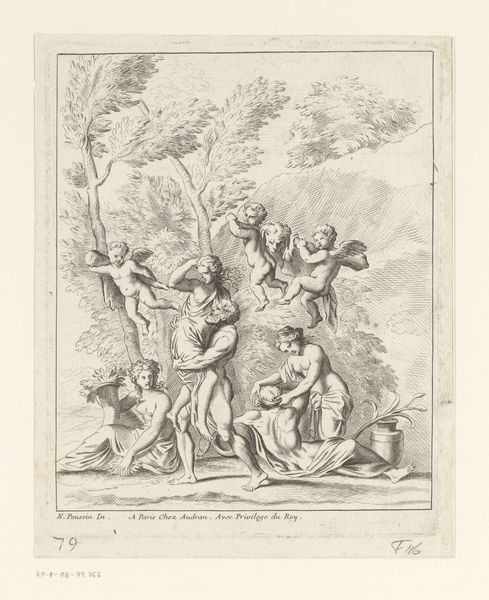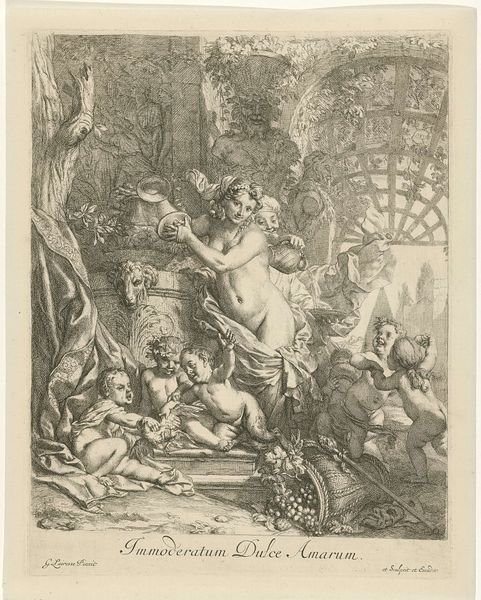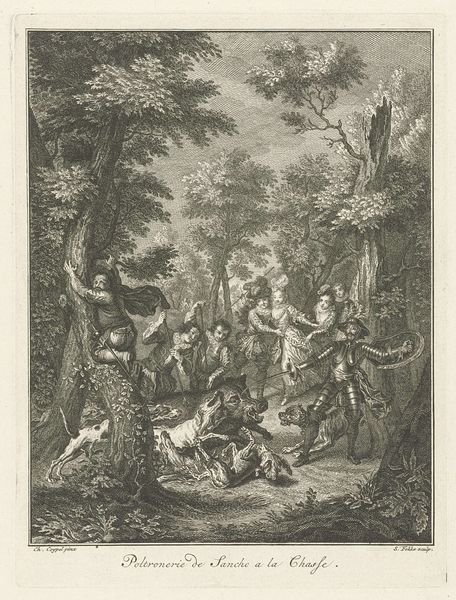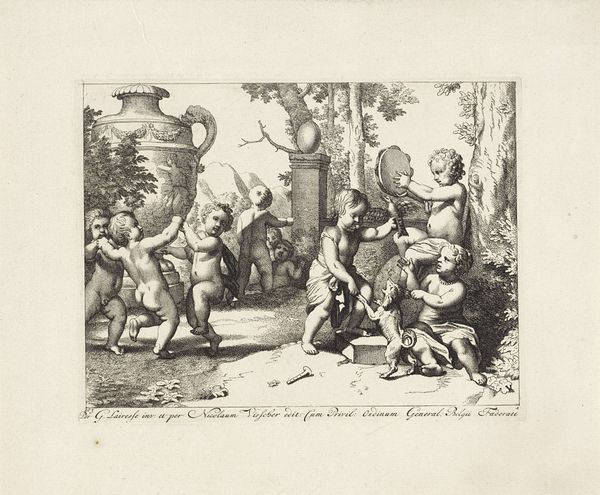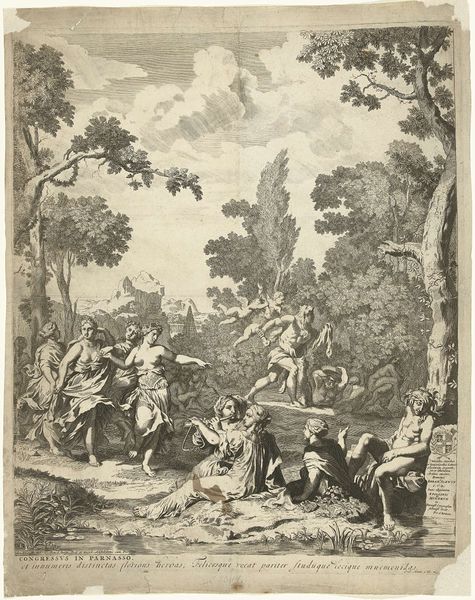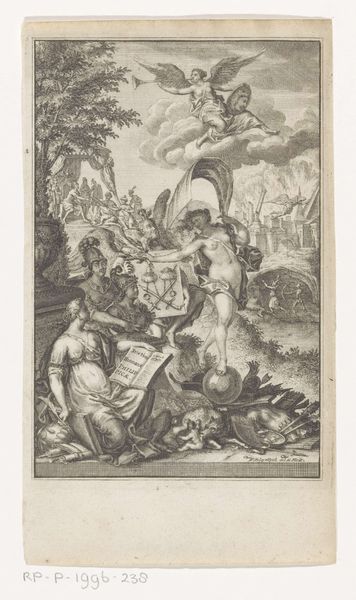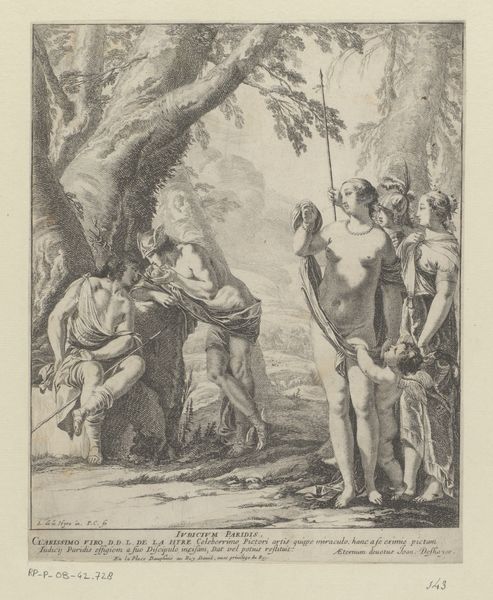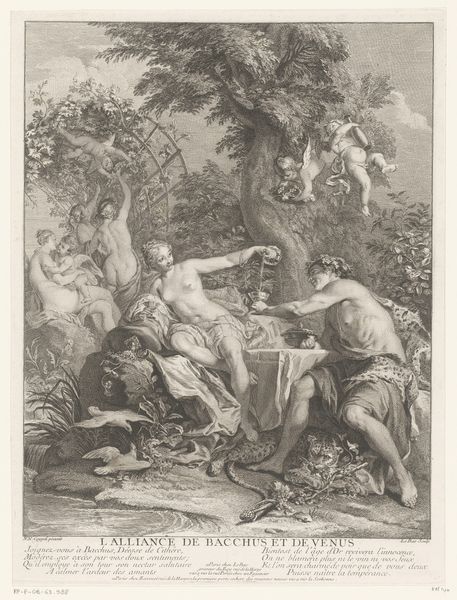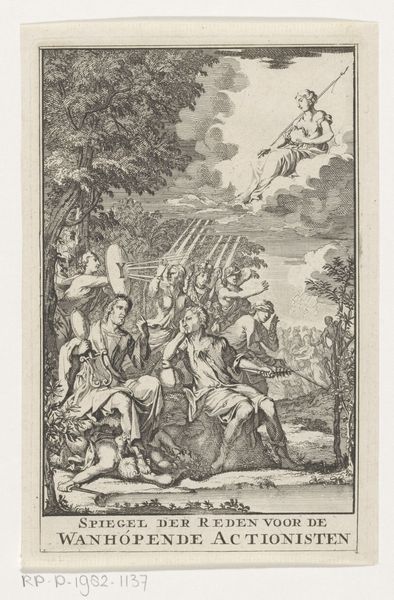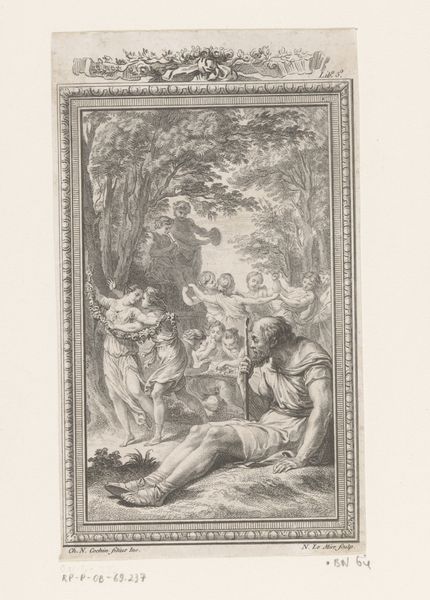
engraving
#
allegory
#
baroque
#
old engraving style
#
landscape
#
figuration
#
history-painting
#
engraving
Dimensions: height 243 mm, width 192 mm
Copyright: Rijks Museum: Open Domain
This print, Amaryllis Kust Mirtillo, was made by Richard van Orley sometime between the late 17th and early 18th centuries, through a process called etching. The image is made by drawing a design onto a metal plate covered with a waxy, acid-resistant substance. The plate is then immersed in acid, which bites into the metal where the wax has been removed, creating incised lines. When the plate is inked and pressed onto paper, the design is transferred, resulting in a detailed print. The quality of the print depends on the craftsman's skill in manipulating acid, which is a highly toxic and dangerous material. The tonal variations in the print speak to the ways that the artist has mastered working with different acids. Here, the process underscores the classical scene, full of figures draped in togas, and set in an Arcadian landscape. This print, and the method of etching used to produce it, offered a new way of making art available to a wider audience, challenging traditional hierarchies and making art more accessible. The image, and the way it was made, democratize the culture of the time.
Comments
No comments
Be the first to comment and join the conversation on the ultimate creative platform.


